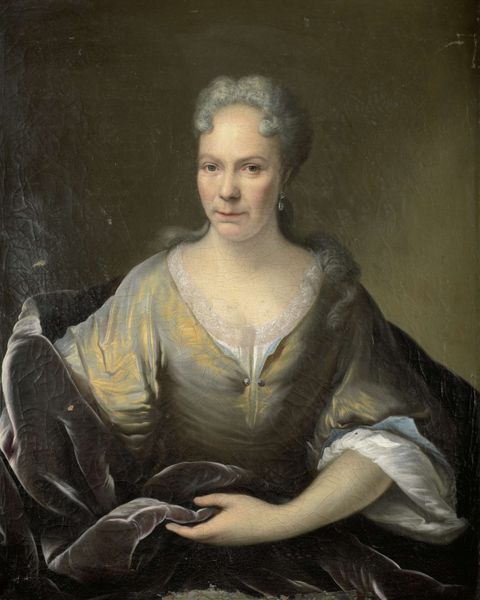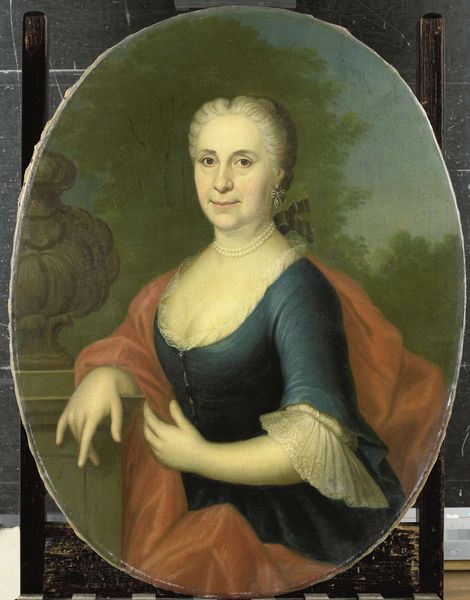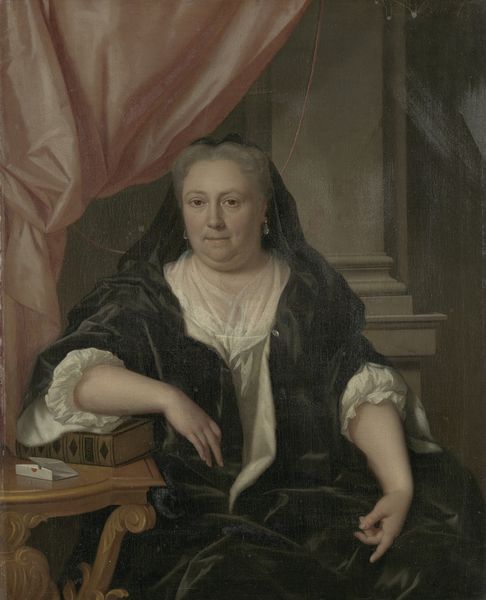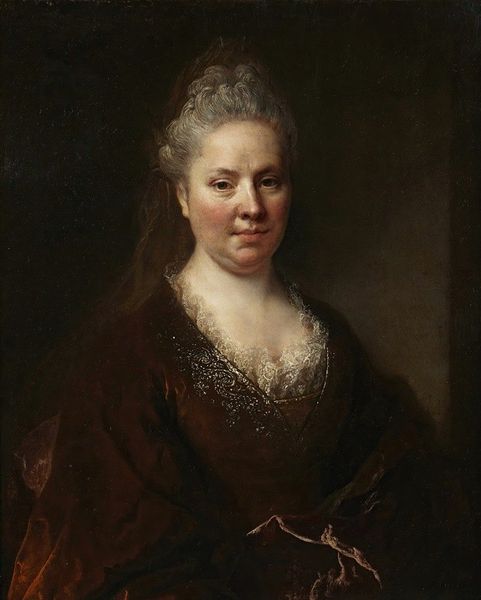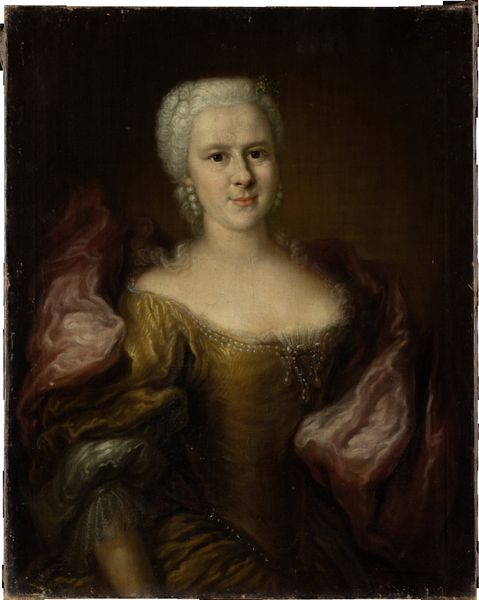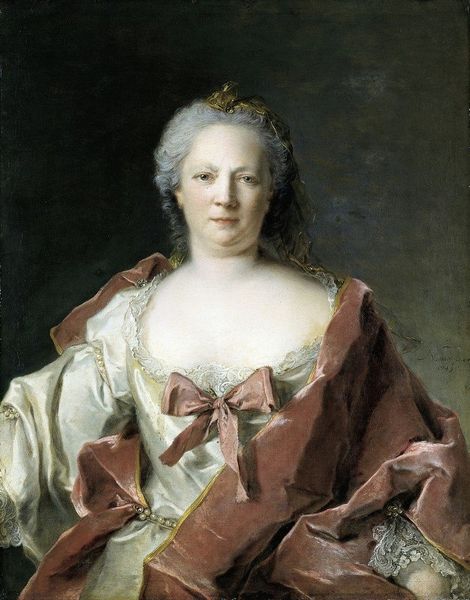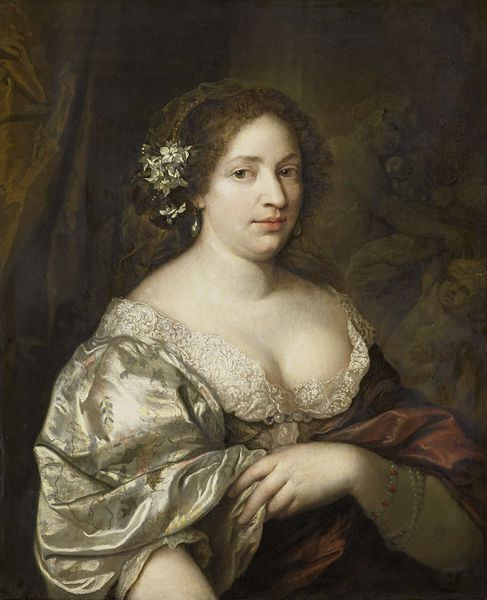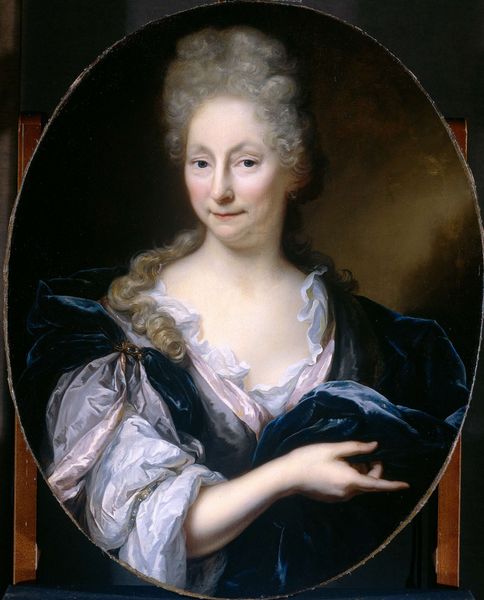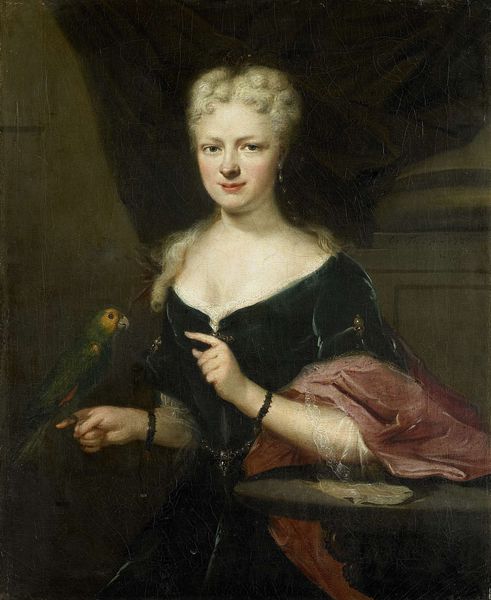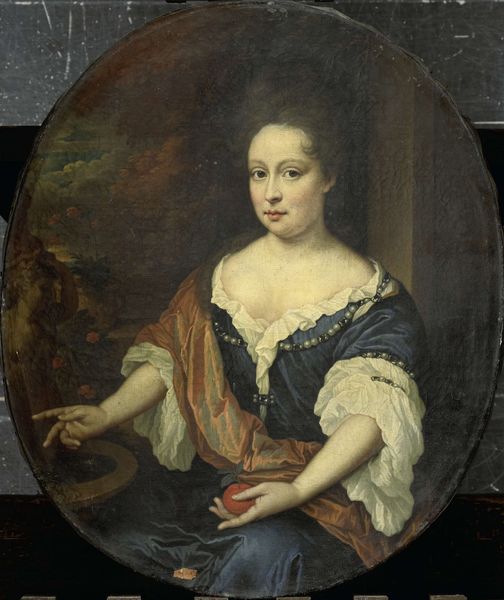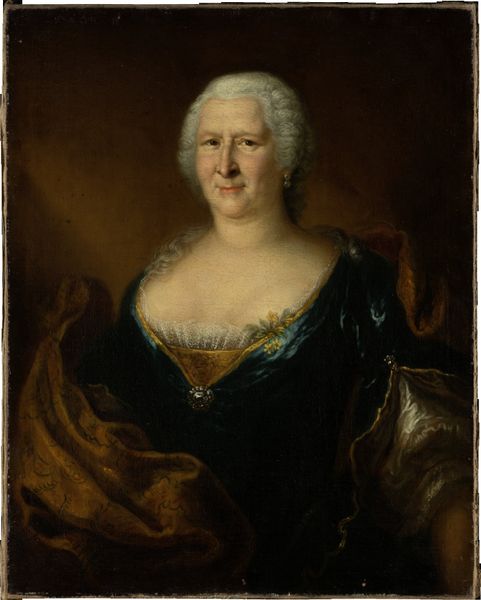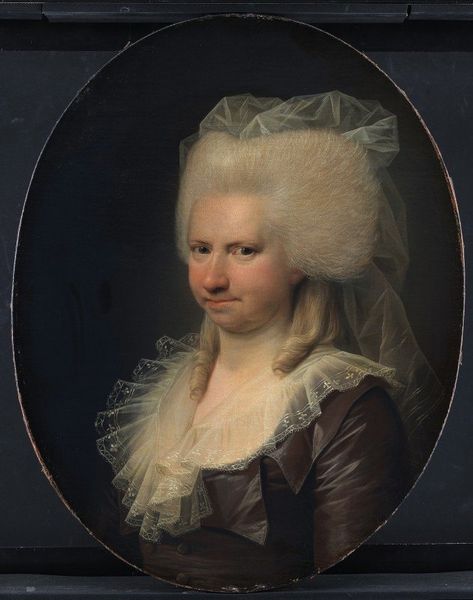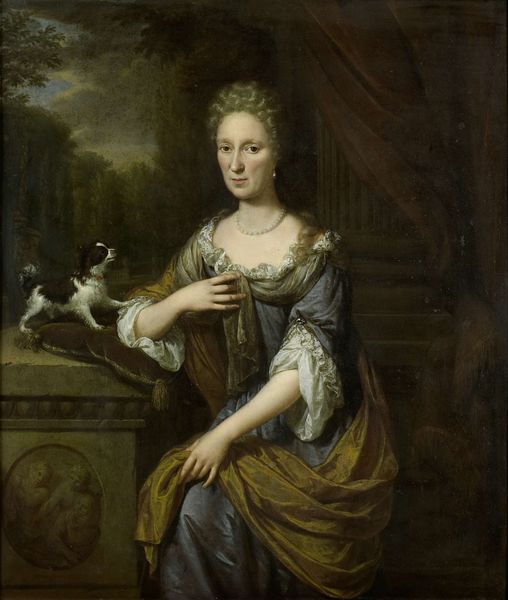
Brechje Hooft (1640-1721). Widow of Harmen van de Poll c. 1700 - 1729
0:00
0:00
painting, oil-paint
#
baroque
#
painting
#
oil-paint
#
genre-painting
#
history-painting
#
academic-art
#
portrait art
#
fine art portrait
Dimensions: height 50 cm, width 41 cm, depth 8.5 cm
Copyright: Rijks Museum: Open Domain
Curator: Before us, we see Arnold Boonen’s painting of Brechje Hooft, a work completed sometime between 1700 and 1729. Boonen has captured Hooft, widow of Harmen van de Poll, with incredible attention to detail, wouldn’t you agree? Editor: Absolutely. The initial impression is of serenity, perhaps a quiet strength. I am curious about the positioning of the figure against that classical backdrop, almost like a theater stage. Curator: That juxtaposition of domesticity with classical idealism is certainly striking. The formal attire of Brechje— the satin sheen, the crisp linen cap—these details situate her within a very specific social class and era. But I also sense the visual coding of respectability that widowhood brings in certain eras. Editor: Indeed, it makes me consider the restrictions placed on women of her time. Widowhood often conferred a degree of social autonomy that married women lacked. Do you see this portrait as subtly celebrating or acknowledging this shift in status? The background suggests something bigger is beyond the space she occupies. Curator: The landscape in the background hints at a world beyond her domestic sphere, but her clothing signifies her commitment to that space. The white cap might evoke a nun-like habit or servitude, while her clothing, though modest in cut, exudes a soft luminescence that evokes more wealth than denial. Boonen presents a study in contrasts here. Editor: I am particularly drawn to the almost severe lighting. Look at the planes of her face, carefully delineated. Do you feel there is something about the composition of light here which seems to want to remove any possibility of ambiguity? Curator: That controlled light reinforces the notion of stoicism and reserve so central to Dutch portraiture of this time. Every detail serves to underscore Brechje’s status, character, and, of course, her adherence to the conventions of proper Dutch society. Her subtle gesture also—what does it say to you? Editor: To me, that hand gesture could symbolize a measured involvement with the world. A willingness to participate, but on her own terms. A delicate offering. But perhaps it's an insistence of quiet power over this carefully mediated depiction of the self. Curator: Well, whatever the symbolism, the painting beautifully captures a very specific moment in Dutch history. An era of economic power, global exploration, and of women, sometimes empowered despite the confines of her gender and position. Editor: A very insightful portrait that allows for endless conversations about Dutch history, portraiture, and social agency. Thank you for highlighting this.
Comments
No comments
Be the first to comment and join the conversation on the ultimate creative platform.
